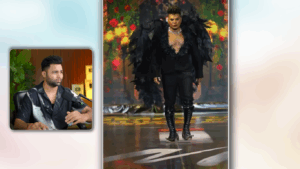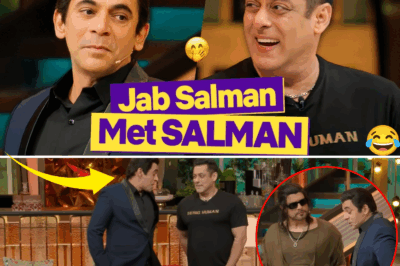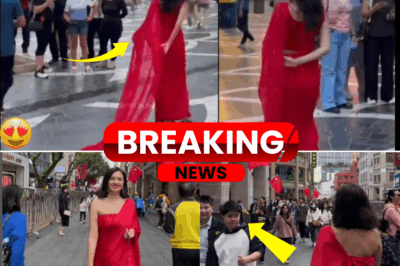The Rise of Soft Porn on Instagram Reels: A Satirical Wake-Up Call for Indian Social Media
In an era where social media platforms dictate the pulse of youth culture, Instagram Reels has emerged as both a creative playground and a controversial battleground. What started as a space for dance trends, comedy sketches, and bite-sized entertainment is now witnessing a subtle but undeniable influx of “soft porn” content—videos that flirt with the boundaries of decency, often under the guise of humor, romance, or lifestyle vlogs.

Popular Indian YouTuber Eshan Masih, known for his razor-sharp wit and unfiltered commentary, dives headfirst into this phenomenon in his viral roast series. In his latest episode, he doesn’t hold back as he lampoons the creators, the audience, and the very ecosystem that enables such content to thrive. His approach is equal parts hilarious, scathing, and thought-provoking—a mirror reflecting not just the absurdity of the content, but also the society that consumes and celebrates it.
The Gorilla in the Room
Eshan begins his roast with a pointed jab at a particular Instagrammer—nicknamed “Gorilla”—whose antics have become the talk of the virtual town. “Society’s naughtiest, most mischievous gorilla,” he quips, highlighting how the influencer’s content has evolved from cheeky to downright scandalous. When a girl accidentally spills a cold drink on her clothes and the influencer jumps to help, Eshan notes, “This video was enjoyed by three million people—girls are making heart emojis, everyone’s happy. Oh my God, they’re approving this trash!”
It’s not just the creators who come under fire; it’s the millions who like, comment, and share these videos, legitimizing and amplifying their reach. Eshan’s sarcasm drips with concern: “My youth is heading in the right direction, my country is progressing—Instagram will turn everyone into a fool!”
Viral Validation and the Audience’s Role
What’s most unsettling—and darkly humorous—is how quickly such content garners validation. Eshan observes, “People are leaving comments on public platforms, not caring how they’ll be judged. If you enjoy this content, what does that say about your mentality?” He points out the herd mentality, where viewers, especially young women, flock to the comment sections, showering praise and affection on creators whose talent, if any, is overshadowed by their shamelessness.
He doesn’t spare himself from critique, either. “Tell me in the comments—can I be a supermodel? I can’t attract girls like Eshan Bhai, but do I have some talent?” The self-deprecation is both a comedic device and a subtle call for self-reflection among viewers.
The New Age of Influencers: From Jungle to Instagram
Eshan’s roast takes a wild turn as he describes the bizarre content trends—banana-eating challenges, cringe-worthy dance moves, and collaborations with reality TV stars whose careers are on the wane. “I apologize on behalf of the entire banana community for these antics,” he jokes, highlighting how even the most mundane acts are sexualized for views.
He draws attention to the targeted audience: “Married women, unhappy with their husbands, find solace in these videos. Their desires won’t leave them, even if their shadows do.” The satire is biting, exposing the loneliness and unfulfilled aspirations that social media exploits.

The Bebika Dhurve Factor: When Reality TV Meets Reels
The roast takes a sharper edge with the inclusion of Bebika Dhurve, a former reality TV contestant now collaborating with the same influencers she once criticized. Eshan recalls, “In her Bigg Boss season, she’d insult and criticize others for their upbringing. Now, she’s making reels with them!” The hypocrisy is laid bare, and Eshan’s audience is left to question the authenticity of influencer culture.
He doesn’t shy away from body-shaming and crude humor, a controversial choice that sparks debate about the limits of satire. Yet, his underlying message is clear: “These people are reviving the careers of failed reality TV contestants. What are you actually doing with all your talent? Making adult content on Instagram?”
The Cringe Olympics: How Far Is Too Far?
From dancing suggestively to Honey Singh songs to performing outlandish stunts in deserted jungles, the content creators seem locked in a race to the bottom. Eshan’s disgust is palpable: “Why are you turning Instagram into Pornhub? These lust-filled eyes make everyone uncomfortable.”
He describes the scenes with a mix of horror and disbelief—grapes being desecrated, suggestive pillow antics, and even smoking cigarettes with toes. “Where do they get these ideas? Watching this content is like inviting cancer into your life!” he exclaims.
The Audience: Complicit or Victim?
Perhaps the most damning indictment is reserved for the audience. “I feel worse for those who like and comment on these videos than for the creators themselves,” Eshan admits. He laments the state of entertainment, where talentless, “cringe” content is rewarded with virality, while genuine creativity is sidelined.
He urges viewers to block such creators from their loved ones’ accounts, lest their partners end up in the infamous comment sections. “This is just one example—Instagram is full of people like this who shouldn’t even exist on the platform,” he warns.
A Call for Better Content
Eshan’s roast is more than just a comedic takedown—it’s a passionate plea for better content. “You have talent—why not use it for something worthwhile? Why make videos that earn you no respect?” he asks, challenging young creators to rise above the noise and create something meaningful.
He ends with a weary sigh, “No more gyaan, my brain is fried. Follow me on Instagram—I don’t make trashy videos.” The exhaustion is real, but so is the hope that things can change.

Conclusion: A Mirror to Society
Eshan Masih’s roast is a microcosm of a larger societal dilemma. As algorithms reward outrage and sensationalism, the line between entertainment and exploitation blurs. The real question is not just about who creates such content, but why so many of us are drawn to it.
The laughter, the cringe, the outrage—all serve as reminders that social media is a reflection of our collective desires, insecurities, and values. Whether we choose to elevate or degrade that reflection is up to us.
In the end, Eshan’s message is simple: Demand better, create better, and don’t let the circus distract you from your own potential. Because in a world of endless reels, maybe it’s time we all hit pause and ask ourselves—what are we really watching, and why?
News
When Laughter Meets Legend: Sunil Grover’s Hilarious Salman Khan Mimicry—Right in Front of the Superstar Himself
When Laughter Meets Legend: Sunil Grover’s Hilarious Salman Khan Mimicry—Right in Front of the Superstar Himself A Night of Comedy…
Why Are They Dressing Like This for Paparazzi? The Outrage, the Spectacle, and the Sad Reality of Viral Fame
Why Are They Dressing Like This for Paparazzi? The Outrage, the Spectacle, and the Sad Reality of Viral Fame The…
Draped in Red: The Magic of an Indian Saree on Chinese Streets
Draped in Red: The Magic of an Indian Saree on Chinese Streets In a world that often feels divided by…
South Koreans React to India’s Lavish Weddings: Awe, Envy, and a Touch of Fairy Tale
South Koreans React to India’s Lavish Weddings: Awe, Envy, and a Touch of Fairy Tale When we think of weddings,…
Shefali Jariwala and Bollywood’s Toxic Beauty Standards: The Price of Perfection
Shefali Jariwala and Bollywood’s Toxic Beauty Standards: The Price of Perfection In a world obsessed with perfection, Bollywood stands as…
Chingri Malai Curry & Patali Gur: A Bengali Feast and Heartfelt Conversation with Kajol
Chingri Malai Curry & Patali Gur: A Bengali Feast and Heartfelt Conversation with Kajol A Table Laden with Memories In…
End of content
No more pages to load












